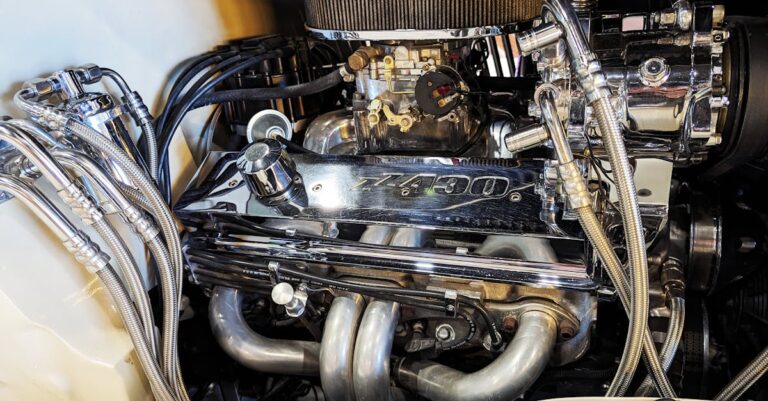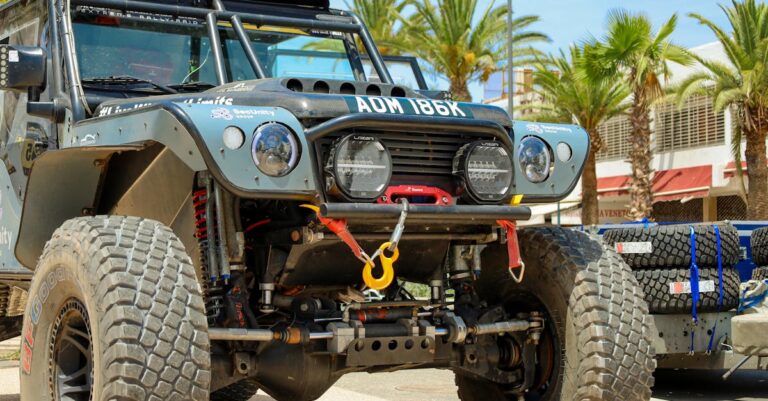Table of Contents
- Car Suspension System Explained: Your Guide to a Smoother Ride
- What Exactly *Is* a Car Suspension System?
- The Key Players: Components of a Suspension System
- Different Strokes: Types of Suspension Systems
- Why Should You Care? The Importance of a Healthy Suspension
- Signs Your Suspension Needs Some TLC
- Maintaining Your Suspension: Pro Tips
- Conclusion: The Unsung Hero of Your Drive
- Frequently Asked Questions (FAQs)
Car Suspension System Explained: Your Guide to a Smoother Ride
Ever glide over a bumpy road and think, “Wow, that was surprisingly smooth”? Or maybe you’ve hit a pothole and felt like your fillings might rattle loose? The unsung hero (or sometimes the villain!) behind that experience is your car’s suspension system. It’s one of those critical parts we often take for granted until, well, we can’t anymore. But what exactly *is* it, and why is it so crucial for not just comfort, but safety and performance too?
Think of your car’s suspension as its legs and muscles. It connects the wheels to the car’s body, managing the ups and downs, the twists and turns, and generally keeping things stable and comfortable. Without it, driving would feel like riding a rickety wooden cart down a cobblestone street – not exactly pleasant, right? Let’s dive deep into the world beneath your car and unravel the mysteries of the suspension system.
What Exactly *Is* a Car Suspension System?
At its core, the suspension system is a network of springs, shock absorbers, linkages, and joints that sits between the frame (or body) of your vehicle and the wheels. Its primary job sounds simple: absorb the shocks from road imperfections like bumps, potholes, and uneven surfaces. But it’s doing so much more than just smoothing out the ride.
The Core Mission: Comfort and Control
The suspension system is constantly performing a delicate balancing act. Its two main goals are:
- Maximize Ride Comfort: This is the obvious one. The springs in the system compress and expand to soak up the energy from bumps, preventing those harsh jolts from reaching you and your passengers in the cabin. Imagine jumping on a trampoline versus jumping on concrete – the springs make all the difference!
- Maintain Tyre Contact and Handling: This is arguably the *more* critical function from a safety perspective. For your car to steer accurately, brake effectively, and corner stably, the tyres need to stay firmly planted on the road surface as much as possible. The suspension works tirelessly to keep the tyres in optimal contact with the ground, even as the car body moves up, down, or leans side to side. Good contact equals good grip, and good grip equals control.
Why It’s More Than Just Bumps
While dealing with bumps is a big part of the job, the suspension system is also actively managing the forces generated by driving itself. When you accelerate, the weight shifts backward; when you brake, it shifts forward; when you turn, it shifts sideways. The suspension controls these weight transfers, preventing excessive nosediving during braking, squatting during acceleration, and body roll during cornering. This control is fundamental to predictable handling and overall vehicle stability.
The Key Players: Components of a Suspension System
Like any good team, the suspension system relies on several key components working together harmoniously. Let’s meet the main players:
Springs: The Bouncers of the Car World
Springs are the component responsible for supporting the vehicle’s weight and absorbing the initial shock from road imperfections. They allow the wheels to move up and down relative to the body. Think of them as the primary cushions. There are a few common types:
Coil Springs Explained
These are the most common type found on modern passenger cars. They look exactly like you’d imagine: heavy duty metal coils. They compress and expand to absorb impacts. They are compact, efficient, and relatively inexpensive to manufacture, making them a popular choice for front and rear suspension setups.
Leaf Springs: Old School Cool
Often found on older cars and commonly used on the rear suspension of trucks and heavy duty vehicles, leaf springs consist of several layers (or leaves) of flat spring steel bolted together. They are robust and excellent at handling heavy loads, which is why they remain popular for work vehicles. They are simpler in design but generally provide a less refined ride compared to coil springs.
Torsion Bars: The Twisters
Less common now but used effectively in the past (and still on some trucks and SUVs), a torsion bar is a long, straight bar of spring steel. One end is fixed to the vehicle frame, and the other is attached to a suspension control arm. When the wheel hits a bump, the control arm twists the bar along its length. The bar’s resistance to twisting provides the spring action. It’s a space saving design compared to coil springs.
Shock Absorbers (Dampers): Taming the Bounce
Okay, so the springs absorb the bumps, but what stops the car from just bouncing up and down endlessly like a pogo stick? That’s where shock absorbers, also known as dampers, come in. Springs store energy when compressed; shocks dissipate that energy as heat.
How Shocks Work Their Magic
Inside a typical shock absorber is a piston moving through hydraulic fluid within a sealed tube. As the suspension moves up and down, the piston forces the fluid through small passages or valves. This resistance slows down the spring’s oscillation, controlling the bouncing and settling the vehicle quickly after hitting a bump or disturbance. Worn out shocks are often the culprit behind that floaty, uncontrolled bouncing feeling.
Struts: The All in One Solution?
You’ll often hear the term “strut,” especially in relation to front suspensions (like the common MacPherson strut). A strut is essentially a structural unit that combines the shock absorber *and* the spring (usually a coil spring mounted around it) into a single assembly. It also often serves as a steering pivot point for the front wheels. This integrated design saves space and simplifies the suspension geometry, making it a popular choice for many vehicles.
Control Arms & Linkages: Keeping Things Aligned
These are the metal arms and rods that connect the wheel hub (where the wheel bolts on) to the vehicle’s frame or body. They pivot at specific points, allowing the wheel to move up and down while maintaining the correct alignment and geometry. Think of them as the ‘bones’ of the suspension, guiding the wheel’s movement precisely. Different suspension designs use various configurations of control arms (like upper and lower arms in a double wishbone setup) and linkages to achieve specific handling characteristics.
Bushings & Ball Joints: The Unsung Heroes
These are the small, often overlooked components that allow the suspension parts to pivot and move smoothly without metal on metal contact.
- Bushings: Usually made of rubber or polyurethane, bushings are fitted into the connection points of control arms and other linkages. They absorb vibrations, reduce noise, and allow for controlled movement. Worn bushings can lead to clunking noises, sloppy handling, and alignment issues.
- Ball Joints: These act like the ball and socket joints in your own body (think hip or shoulder). They allow rotational movement and are crucial connection points, often found where the control arms meet the steering knuckle (the part the wheel hub attaches to). Worn ball joints are a serious safety concern, potentially leading to a loss of steering control or even wheel detachment in extreme cases.
Different Strokes: Types of Suspension Systems
Not all suspension systems are created equal. Engineers choose different designs based on the vehicle’s intended purpose, cost targets, and desired handling characteristics. The biggest distinction is between dependent and independent systems.
Dependent vs. Independent Suspension: What’s the Diff?
Imagine a solid axle connecting the left and right wheels, like you often see on the back of older cars or heavy duty trucks. That’s a dependent suspension. When one wheel hits a bump, the movement is directly transferred to the other wheel because they are physically linked. This is simple, strong, and great for load carrying, but it compromises ride comfort and handling, as one wheel’s bump affects the other.
Now, picture each wheel being able to move up and down entirely on its own, without directly affecting the wheel on the opposite side. That’s an independent suspension. This allows each wheel to react to road imperfections individually, leading to a much smoother ride, better tyre contact with uneven surfaces, and improved handling. Most modern passenger cars use independent suspension on the front wheels, and many use it on the rear as well.
Common Front Suspension Types
Since the front wheels also handle steering, front suspension design is crucial. Common types include:
- MacPherson Strut: Simple, compact, and cost effective. Uses a strut assembly as described earlier, acting as both damper/spring holder and upper steering pivot. Very common on mainstream cars.
- Double Wishbone (or A Arm): Uses two (upper and lower) wishbone shaped control arms to locate the wheel. This design offers excellent control over wheel geometry during suspension travel, leading to better handling and tyre contact. Often found on sports cars and performance vehicles, but also some trucks and SUVs.
Common Rear Suspension Types
Rear suspension designs vary widely:
- Solid Axle (Dependent): As mentioned, common on trucks and some older cars. Can use leaf springs or coil springs.
- Torsion Beam (Semi Independent): A compromise between dependent and independent. Uses a beam connecting the two rear wheels, but the beam can twist slightly, allowing some independent movement. Common on many front wheel drive cars due to its simplicity and space efficiency.
- Multi Link (Independent): Uses several control arms or “links” (often three, four, or five per side) to precisely control wheel movement in multiple directions. Offers the best combination of ride comfort and handling performance but is more complex and expensive. Often found on higher end vehicles and performance cars.
Why Should You Care? The Importance of a Healthy Suspension
Okay, we’ve geeked out on the parts and types, but why does this *really* matter to you, the everyday driver? A well functioning suspension system is vital for several reasons:
Ride Comfort: Say Goodbye to Jarring Journeys
This is the most immediate benefit you feel. A healthy suspension isolates you from road noise and vibrations, making long drives more relaxing and everyday commutes less taxing. It turns a potentially jarring experience into a smooth glide.
Handling & Stability: Staying Glued to the Road
As we discussed, keeping the tyres in contact with the road is key. A good suspension ensures maximum grip during cornering, acceleration, and braking. It controls body roll, making the car feel stable and predictable, giving you more confidence behind the wheel, especially during evasive maneuvers or on twisty roads.
Safety First: Braking and Control
This directly ties into handling. Worn suspension components, especially shock absorbers, can significantly increase your braking distance because the tyres may bounce off the road surface instead of maintaining consistent contact. It can also make the car harder to control during emergency braking or sudden swerves. A properly functioning suspension is a critical safety system.
Tyre Wear and Tear: Saving Your Rubber
Is your suspension out of whack? Your tyres will likely pay the price. Worn parts or incorrect wheel alignment (which the suspension controls) can cause tyres to wear unevenly and prematurely. This means you’ll be replacing expensive tyres more often than necessary. Common signs include wear on the inner or outer edges (cupping) or patchy wear patterns.
Signs Your Suspension Needs Some TLC
Your car usually gives you clues when its suspension isn’t happy. Listen to your car and pay attention to how it feels. Here are some common warning signs:
The Bumpy Ride Test
Does every small bump feel like a major crater? Is the ride noticeably harsher than it used to be? This is often the first sign that shocks, struts, or springs might be wearing out.
Uneven Tyre Wear Patterns
As mentioned above, take a look at your tyres. If you see strange wear patterns – scalloping, cupping, or excessive wear on just one edge – it’s a strong indicator of a suspension or alignment problem.
Diving, Squatting, and Rolling
Does the front end dip excessively when you brake (nosedive)? Does the rear end sink down when you accelerate (squat)? Does the car lean heavily or feel unstable when you turn (body roll)? These behaviours often point to worn shocks or struts that aren’t controlling the vehicle’s weight transfer effectively.
Oily Shocks or Struts
Take a peek behind your wheels. Shock absorbers and struts contain hydraulic fluid. If you see oily residue or fluid leaking down the side of the shock/strut body, it means the seals have failed, and the component is no longer functioning correctly. It needs replacement.
Strange Noises: Clunks, Creaks, and Groans
Listen carefully when driving, especially over bumps or when turning. Clunking sounds often indicate worn bushings, ball joints, or strut mounts. Creaking or groaning noises might point to worn ball joints or dry bushings. Don’t ignore these sounds – they’re your car asking for help!
Maintaining Your Suspension: Pro Tips
While some suspension wear is inevitable, you can help prolong its life and catch problems early with a bit of preventative care:
Regular Inspections are Key
Ask your mechanic to visually inspect the suspension components during routine maintenance like oil changes or tyre rotations. They can spot leaks, damaged parts, worn bushings, or loose connections before they become major problems.
Wheel Alignment Matters More Than You Think
Wheel alignment isn’t just about making the steering wheel straight; it ensures the wheels are angled correctly relative to the road and each other, as dictated by the suspension design. Potholes and general wear can knock the alignment out. Getting it checked periodically (annually, or after hitting a significant pothole) prevents uneven tyre wear and ensures optimal handling. Alignment is fundamentally linked to suspension health.
Don’t Ignore Warning Signs
If you notice any of the symptoms mentioned earlier – rough ride, strange noises, poor handling, uneven tyre wear – get it checked out promptly. Ignoring suspension problems can lead to more extensive damage, compromise safety, and end up costing more in the long run.
Conclusion: The Unsung Hero of Your Drive
So, there you have it. The car suspension system is far more than just a comfort feature. It’s a complex network of components working tirelessly to keep you safe, comfortable, and in control. From the humble springs absorbing bumps to the sophisticated linkages maintaining tyre contact, every part plays a crucial role. Understanding how it works and recognizing the signs of trouble can help you maintain your vehicle better, ensuring a smoother, safer, and more enjoyable driving experience for miles to come. Next time you effortlessly glide over a rough patch of road, give a little nod of appreciation to that hardworking suspension system beneath you – it truly is the unsung hero of your drive.
Frequently Asked Questions (FAQs)
FAQ 1: How often should I get my suspension checked?
It’s a good practice to have your suspension visually inspected by a qualified mechanic at least once a year or every 12,000 miles, often during routine servicing like an oil change or tyre rotation. However, if you frequently drive on rough roads, tow heavy loads, or notice any warning signs (like noises or handling changes), get it checked sooner.
FAQ 2: Can I upgrade my car’s suspension?
Absolutely! The aftermarket offers a wide range of suspension upgrades. You can opt for stiffer springs and performance shock absorbers for improved handling (often sacrificing some comfort), lift kits for off road vehicles to increase ground clearance, or lowering springs for a sportier look and lower center of gravity. Just ensure any upgrades are compatible with your vehicle and installed correctly.
FAQ 3: What’s the difference between shocks and struts?
While both control suspension bounce (damping), a shock absorber is purely a damping device. A strut is a structural suspension component that incorporates the damper (shock absorber) and often the spring mount, and it usually replaces the upper control arm and acts as a steering pivot. If your car has struts, they are a critical part of the suspension structure; if it has shocks, they work alongside separate springs and control arms.
FAQ 4: Is a stiff suspension better than a soft one?
Neither is inherently “better”; it depends on the goal. A softer suspension generally provides a more comfortable ride, absorbing bumps better. A stiffer suspension reduces body roll and improves handling responsiveness, making the car feel sportier and more planted during aggressive driving, but it transmits more road imperfections into the cabin. Most passenger cars aim for a balance between the two.
FAQ 5: How much does suspension repair usually cost?
Suspension repair costs can vary wildly depending on the vehicle make and model, the specific components needing replacement, and labor rates in your area. Replacing a pair of shock absorbers or struts might cost anywhere from a few hundred to over a thousand dollars. More complex repairs involving control arms, ball joints, or multi link systems can be significantly more expensive. It’s always best to get a quote from a trusted mechanic.









